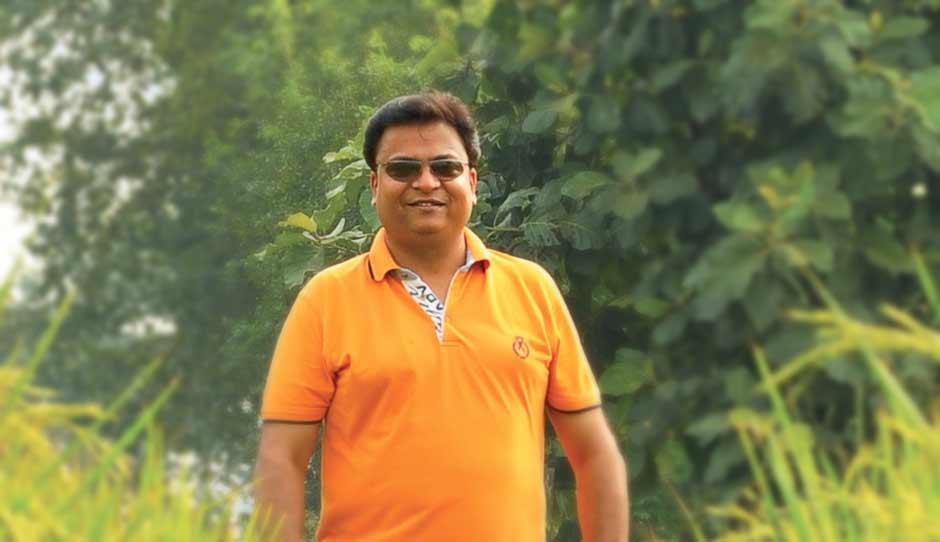How Insecticides India Harvests Growth
- BY Sonal Khetarpal
 In Manage & Grow
In Manage & Grow 17410
17410 0
0

Rajesh Aggarwal and his father Hari Chand Aggarwal parted ways from the family business to cofound Insecticides (India), an agrochemicals business, in December 2001. In 11 years, they have built a company that finished FY2012-13 with Rs650- crore in sales. Aggarwal Jr credits their bountiful growth to a knack for continuously introducing products, and the ability to add manufacturing facilities in a jiffy. These days, Aggarwal is most excited about the formulations being conjured up in his new R&D facility in Rajasthan. This focus on research, he claims, will ensure healthy yields, and power the company’s ambitious expansion plans
I joined our family business of agrochemicals in 1992 after my graduation. The company, Hindustan Pulverising Mills (HPM), was started by my grandfather in 1974 and we were one of the oldest families in north India that was involved in this business. However, one after the other, each of my five uncles took their share from the family business to start on their own. When my grandfather passed away in 2001, my father and I too parted ways from the family concern to start our own agrochemical business. The good thing was we did not have to register a new company. While working for the family business, in 1996, I had got a new name registered as I did not like the name Hindustan Pulverising Mills. It was called Insecticides (India) Limited (IIL). But my uncles were not in favour of changing the 30-year-old company name. So, when my father and I started out, we decided to use IIL for our business.In the beginning, we were eager to have atleast three to four agrochemical products under our company’s name so we could start selling our products to the distributors. Since registration and manufacturing of agrochemical formulations is a long, timeconsuming process, we decided to lease agrochemical brands from other companies. It seemed a viable option as we would know how farmers respond to the respective brand in the one-year lease period.
We leased two herbicides, Milchlor and Milron, and an insecticide Lethal from Montari Industries. It was one of the leading agrochemical companies which made financial losses due to some manufacturing problems and had to close down in the mid-90s. In March 2002, we launched these products in the market. In the first week itself, we got orders from our dealers for five lakh litres of Lethal, three lakh litres of Milchlor and 100 metric tonnes of Milron. They were an instant hit! We made a policy after that that if we find any such dead brands, we will relaunch them. Looking at the success we were getting with these brands, we bought all of Montari’s 21 agrochemicals in 2003. Buying Montari’s products was a huge win. From Rs34 crore in turnover in 2003, we doubled our sales to Rs75 crore in 2004. In that first year, and ever since, our focus on brand promotion has substantially helped us to grow.

In 2003, right after we bought Montari, we zeroed in on using television as the main medium for our brand campaign. TV has a wide reach in rural areas, and is the only source of entertainment there. We signed the actor and anchor Aman Verma as our first brand ambassador. He was very popular during that time thanks to his popular game show Khullja Sim Sim. Also, we didn’t have the budget to sign up a big movie star. That we finally managed in 2011 when we got actor Suniel Shetty to endorse our brand. We used his mass appeal, and worked on our creative to ensure we portray him as a modern farmer in all our promotions. It’s critical to establish farmer’s connect. Having him on board has worked; his mass appeal has helped us get more mileage and recognition in newer markets. In fact, we’ve renewed our contract with him for another three years.
As we were buying and promoting these new brands, we had to set up our production unit to manufacture these products. We set up our first plant in the Chopanki industrial area in Bhiwadi, Rajasthan in March 2002. Setting up this plant was easy due to the contacts I had formed while working for my family business. In 1994, when the Supreme Court ordered to move all red category (mostly heavy polluting ones) industries out of Delhi we had to move HPM’s plant to Bhiwadi. It was the first project that I was entirely responsible for. I lived in that area for almost six months. The network I had built then helped set up the first Bhiwadi plant for IIL in just four months. At that time, India had signed the GATT agreement to promote importing of latest technology. But, in the agrochemicals industry, foreign companies were taking a long time to enter the Indian market. By the time the technology reached India it would become off-patented. We started buying these off-patented products so we could manufacture them in our Bhiwadi facility. That way, we could offer these products to farmers at a cheaper price and they saved on royalties, which otherwise had to be paid on global brands in India. We introduced four agrochemical formulations— Thia Phenate Methyl, Acetamiprid, Imidacloprid and Cypermethrin —in the next two years.To keep growing, we explored all avenues possible to expand our product range. We tied up with international leaders to bring their brands to India. In 2006, we collaborated with American Vanguard Corporation, USA, for one of the biggest international insecticide brand, Thimet. The increasing product range had to be balanced with the increase in factories.
In 2004, we opened our second plant in Samba, Jammu and Kashmir. In fact, we were the first company to set up an agrochemical plant there. J&K is a very sensitive area due to terrorist activities and there were security checks at every crossing. One could not even walk out in the evening. I had to stay there for a month to get things going. And, it took us another four months to complete that plant. It was once this plant was completed in 2005 that we started automating our two facilities in a big way to increase their production capacity. I faced resistance from our factory workers to do this. I had to introduce the automatic machinery gradually, one unit at a time. Once they saw the benefits of automation, it was easier to make further changes. I feel we should have adopted automation in a big way in our factories when we were constructing them. We would have reaped many benefits such as process optimisation and better utilisation of resources which we missed out due to the delay in automation. In 2007, we set up our third plant again in Bhiwadi. As we were expanding considerably, we wanted the company to be a professional organisation, not a typical father-son company. It was in May 2007 that we went public. We raised Rs35 crore. The money helped us in adding more manufacturing units.
Since 2007, we’ve opened two more formulation plants, one in Udhampur, J&K and another in Dahej, Gujarat. With five production units in eight years, construction work at IIL has never really stopped! We had pinned down these three states for manufacturing because in J&K the government gives huge tax exemptions; Rajasthan is the industrial hub and near our HQ in Delhi, and Dahej is an upcoming port and a chemical industry hub. After the collaborations and the tie-up, the next big step for us was to get into discovering agrochemical molecules. In 2012, we formed a joint venture with the Japanese company Otsuka Agri Techno to establish an R&D centre in Bhiwadi. We take great pride in the fact that we are a research-based agrochemical company. Barely any of our competitors have a similar ability to discover and develop new products. This is the cornerstone of our success, and why we are confident that within a year or so, we will easily breach our projected turnover of Rs800 crore.





























Add new comment